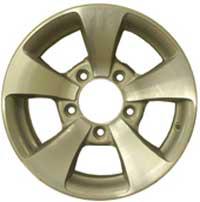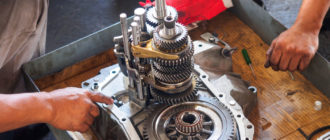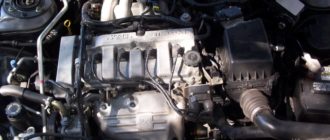Driving with bad suspension components can be a recipe for disaster, as it not only affects the comfort of your ride but also the safety of everyone involved. Suspension systems are designed to absorb shocks and vibrations on uneven roads, providing a comfortable and smooth ride. However, over time, these components tend to wear out, leading to a compromised suspension system that can be dangerous.
In this article, we dive into the importance of having well-maintained shocks and struts and the dangers of driving with bad suspension components. We will discuss common warning signs of suspension issues and how they impact driving performance.
As a driver, your car’s suspension is one of the most critical components that ensure your safety, stability, and comfort on the road. Ignoring signs of suspension issues can lead to accidents or costly repairs down the line. By understanding the dangers of bad suspension components and learning how to maintain your shocks and struts, you can ensure a safe and smooth driving experience.

source: https://www.cashcarsbuyer.com/tips-for-maintaining-the-shocks-and-struts-of-your-vehicle/
The Importance of Maintaining Shocks and Struts
Safe driving demands well-maintained shocks and struts. These suspension components are critical to the proper functioning of your vehicle and ensure that your car remains stable, secure, and safe while on the road. When your shocks and struts become worn or damaged, your car’s stability and handling are compromised, putting both you and your passengers at risk. It’s essential to regularly check and maintain these components to avoid accidents and ensure a smoother and more comfortable driving experience.
Driving with bad suspension components can result in various dangers, including increased braking distances, uneven tire wear, reduced control on turns and corners, and an overall uncomfortable driving experience. Shocks and struts work hard to absorb the shocks and vibrations that roads generate, and if they become weakened or damaged, they lose their ability to do so. This can lead to dangerous situations, especially in emergency maneuvers, where your car’s performance can be severely compromised.
Regular maintenance of your vehicle’s suspension system, including the shocks and struts, is a crucial part of safe driving. This maintenance can involve checking for leaks, cracks, or other signs of wear and tear on these components, as well as ensuring their proper tightening and adjustment. By keeping these elements in good condition, you can improve your vehicle’s stability, ride quality, and overall safety, helping to keep you and your passengers safe on the road.
- Check your shocks and struts at least once a year
- Replace worn or damaged components as soon as possible
- Have your suspension system inspected by a professional mechanic regularly
- Be aware of any unusual noises or vibrations while driving
Remember, safe driving requires more than just following traffic rules and wearing a seatbelt. It also involves taking care of your vehicle and ensuring that all its components are in top condition, including your shocks and struts. By keeping your suspension system well-maintained, you can enjoy a smooth, stable, and safe ride on the road.
The Importance of Properly Maintained Suspension Components for Safe Driving
Driving with bad shocks and struts is one of the most dangerous things a driver can do. When these components are worn out or damaged, they greatly impair the car’s ability to handle bumps, turns, and sudden stops. This can lead to loss of control, reduced steering accuracy, and longer stopping distances. All of which increase the likelihood of accidents.
Worn shocks and struts also affect other parts of the car. For example, they increase tire wear, which can cause a blowout on the highway. They can also cause excessive wear on the suspension system, leading to costly repairs.
That’s why it’s essential to have these components checked and replaced regularly. A mechanic can detect whether they’re worn out or damaged and fix the problem before it turns into a serious issue. Regular maintenance not only keeps the car running smoothly but also ensures the driver’s safety and that of other road users.
- So, what are the signs that your shocks and struts need replacing?
- If you experience excessive bouncing, swaying or nose-diving during braking, it might be time to visit a mechanic.
- Another sign is when there’s uneven tire wear, which indicates that the suspension system isn’t functioning correctly.
- Lastly, if the car seems to handle poorly, producing noises or vibrations, have a professional inspect the car.
Taking proper care of your car’s suspension system is of the utmost importance in safe driving. Don’t ignore the signs and have your car serviced by a mechanic as soon as possible. Your safety and the safety of others on the road depend on it.
Warning Signs of Worn-Out Shocks and Struts
Well-maintained shocks and struts are an essential component of safe driving. Unfortunately, many drivers fail to recognize the warning signs of worn-out suspension components, putting themselves and others at risk on the road.
One telltale sign of bad shocks and struts is excessive bouncing or swaying while driving. If your vehicle feels unstable or is difficult to control, it is likely that your shocks or struts are no longer functioning at their best.
You may also notice uneven tire wear or a decrease in overall handling ability. In extreme cases, a faulty suspension system can even lead to abnormal noises or a noticeable sagging of the vehicle.
It is important to have your shocks and struts inspected regularly by a qualified mechanic to ensure that they are in good working condition. Neglecting suspension maintenance can lead to serious accidents and costly repair bills.
- Excessive bouncing or swaying while driving
- Uneven tire wear or decreased handling ability
- Abnormal noises or sagging of the vehicle
Safe driving demands proper suspension maintenance. Don’t delay in having your shocks and struts inspected if you suspect a problem.

How Maintaining Your Steering and Suspension can Save You Loads of Money
The Importance of Maintaining Your Shocks and Struts for Safe Driving
Your vehicle’s shocks and struts are essential components of your suspension system, which keeps your car stable and ensures a smooth ride. Over time, these components can wear down, leading to a variety of problems that compromise your safety on the road. That’s why it’s critical to have your shocks and struts checked regularly by a qualified mechanic.
One of the primary dangers of driving with bad suspension components is decreased handling and control. When your shocks and struts are worn, your car may bounce or sway, making it difficult to maintain proper steering and braking. This can be especially dangerous in emergency situations, where split-second decisions can mean the difference between life and death.
Another threat to your safety comes from reduced stability and response times. If your shocks and struts are not functioning correctly, your car may be more susceptible to rollovers or other accidents. Additionally, worn suspension components can cause your tires to wear unevenly, leading to blowouts or other tire-related issues while driving.
To ensure your safety on the road, it’s essential to have your shocks and struts checked regularly and replaced as needed. This will not only protect you and your passengers but also extend the life of your tires and other vital components of your vehicle’s suspension system. Don’t take chances with your safety – have your shocks and struts checked by a qualified mechanic today.
- Regular maintenance of your shocks and struts can prevent expensive repairs down the line.
- Ignoring problems with your suspension can also lead to decreased fuel efficiency and poor performance.
- Always consult a qualified mechanic if you suspect issues with your shocks and struts.
Conclusion
Safe driving demands well-maintained shocks and struts. The suspension system of a vehicle is critical to its overall performance and safety on the road. Driving with bad suspension components can lead to a host of dangers, including poor handling, loss of control, and increased braking distances.
Regular maintenance and inspection of shocks and struts is necessary to ensure that they are in good condition. This includes checking for leaks, wear and tear, and proper alignment. It is also important to replace shocks and struts when necessary, to prevent further damage to the suspension system.
In addition to ensuring safe driving, well-maintained shocks and struts can also improve the overall ride quality of a vehicle. Smooth and stable handling can make for a more enjoyable driving experience, while reducing the risk of accidents and injury.
To sum up, investing in the proper maintenance and replacement of shocks and struts is essential for safe and enjoyable driving. Don’t compromise your safety, or the safety of others on the road, by driving with bad suspension components. Regular inspections, maintenance, and replacements can go a long way in protecting yourself and your passengers.
Shocks and struts are the components of the suspension system in a vehicle that help absorb the impacts of bumps and dips in the road, providing a smoother ride for the driver and passengers.
Bad shocks and struts can affect your vehicle's handling, making it feel unstable and less responsive on the road. They can also lead to uneven tire wear and ultimately reduce your vehicle's overall safety and performance.
Some signs of bad shocks or struts include excessive bouncing or jolting when driving over bumps, a noisy or rough ride, uneven tire wear, and drifting or pulling while driving.
You can technically continue to drive with bad shocks or struts, but it's not recommended as it can lead to more serious problems with your vehicle's suspension system, tire wear, and overall safety on the road.
The cost of replacing shocks or struts can vary depending on the make and model of your vehicle, as well as the specific components that need to be replaced. On average, however, the cost can range from $600-$1000.
Replacing shocks or struts can be a complex and potentially dangerous process, so it's not recommended for those without experience in working on vehicles. It's best to have a professional mechanic perform the replacement.
The lifespan of shocks and struts can vary depending on the make and model of your vehicle, as well as driving conditions and other factors. On average, however, they may need to be replaced anywhere from 50,000 to 100,000 miles.






